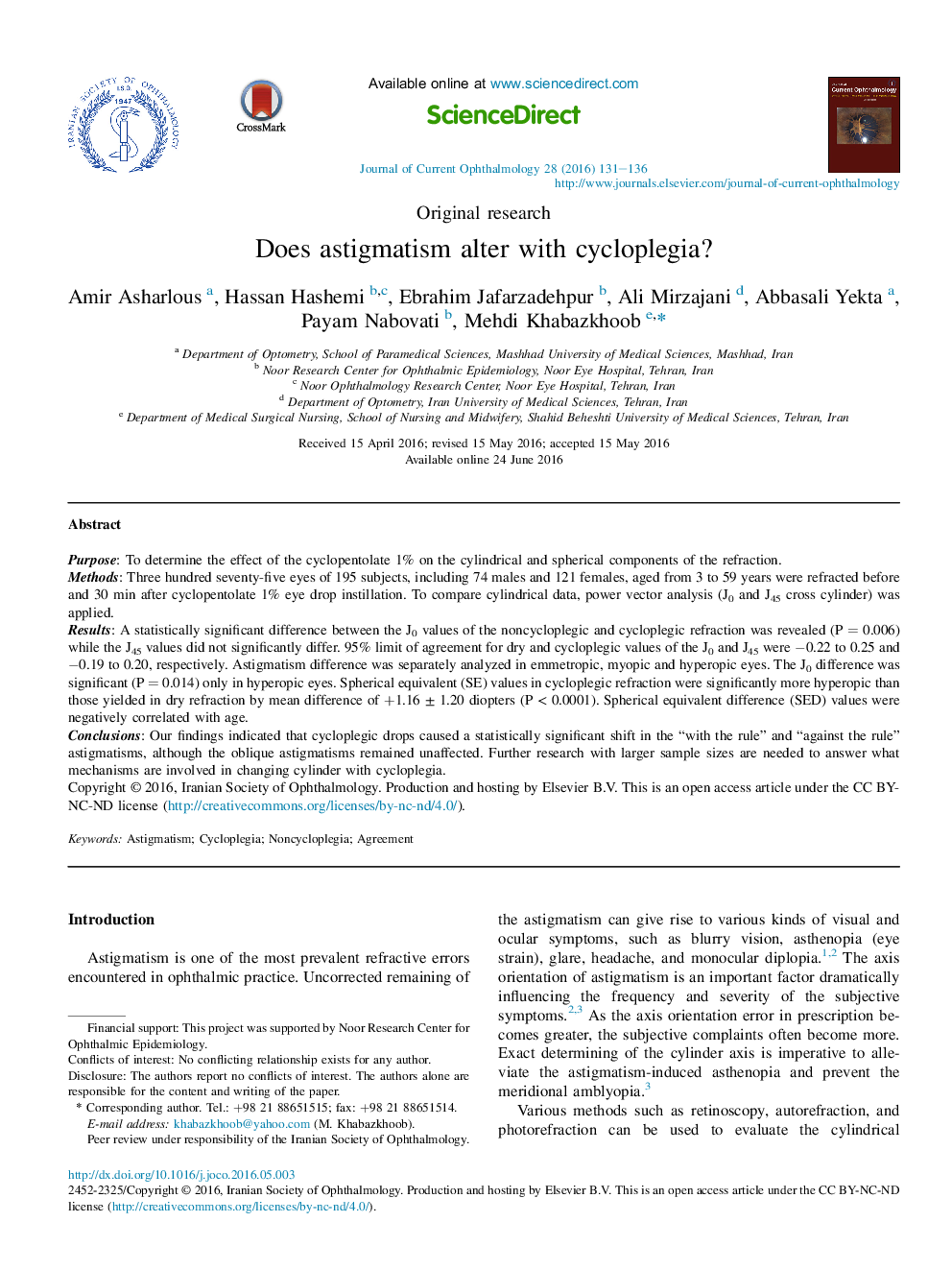| Article ID | Journal | Published Year | Pages | File Type |
|---|---|---|---|---|
| 4022857 | Journal of Current Ophthalmology | 2016 | 6 Pages |
PurposeTo determine the effect of the cyclopentolate 1% on the cylindrical and spherical components of the refraction.MethodsThree hundred seventy-five eyes of 195 subjects, including 74 males and 121 females, aged from 3 to 59 years were refracted before and 30 min after cyclopentolate 1% eye drop instillation. To compare cylindrical data, power vector analysis (J0 and J45 cross cylinder) was applied.ResultsA statistically significant difference between the J0 values of the noncycloplegic and cycloplegic refraction was revealed (P = 0.006) while the J45 values did not significantly differ. 95% limit of agreement for dry and cycloplegic values of the J0 and J45 were −0.22 to 0.25 and −0.19 to 0.20, respectively. Astigmatism difference was separately analyzed in emmetropic, myopic and hyperopic eyes. The J0 difference was significant (P = 0.014) only in hyperopic eyes. Spherical equivalent (SE) values in cycloplegic refraction were significantly more hyperopic than those yielded in dry refraction by mean difference of +1.16 ± 1.20 diopters (P < 0.0001). Spherical equivalent difference (SED) values were negatively correlated with age.ConclusionsOur findings indicated that cycloplegic drops caused a statistically significant shift in the “with the rule” and “against the rule” astigmatisms, although the oblique astigmatisms remained unaffected. Further research with larger sample sizes are needed to answer what mechanisms are involved in changing cylinder with cycloplegia.
